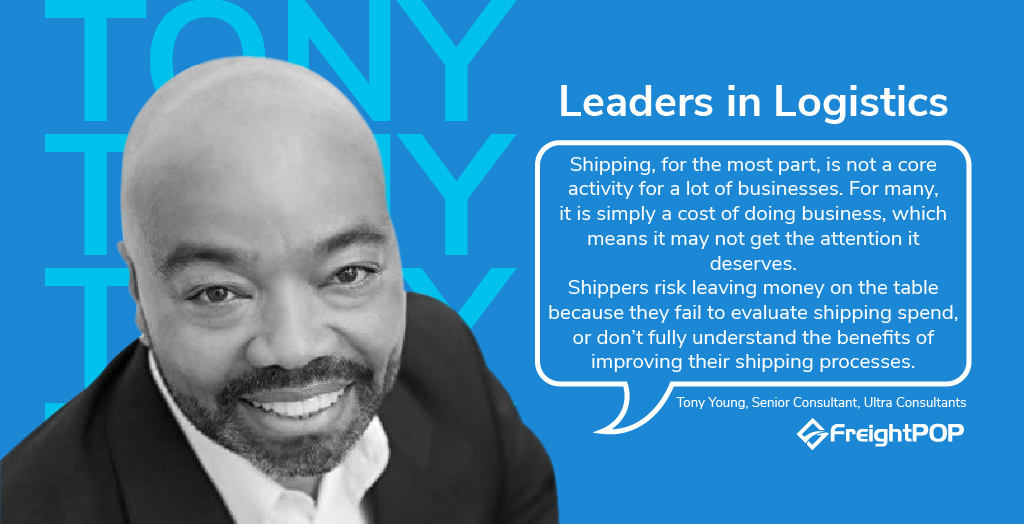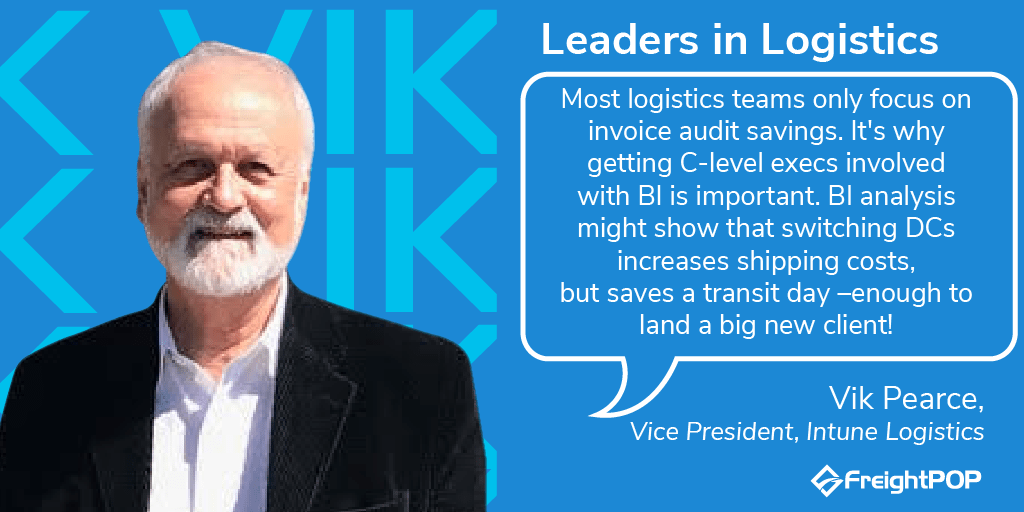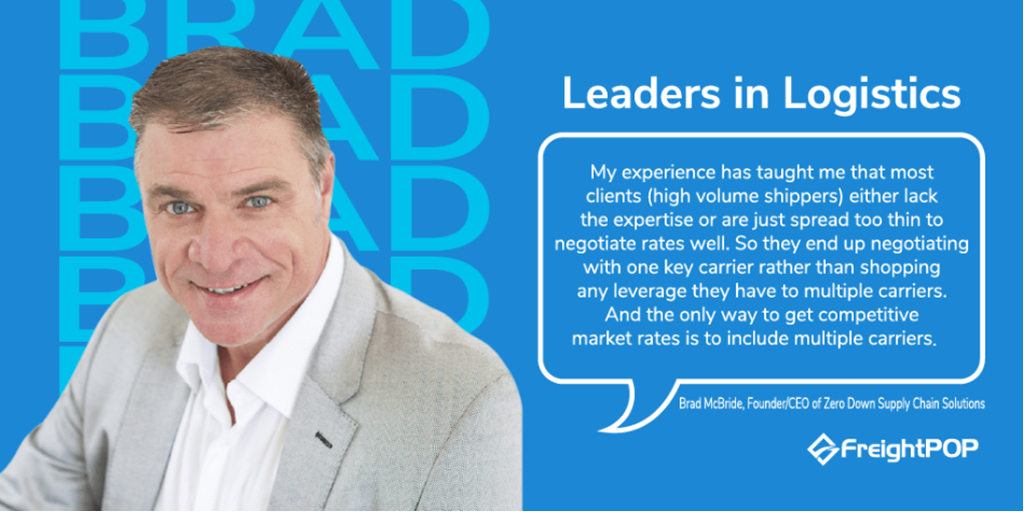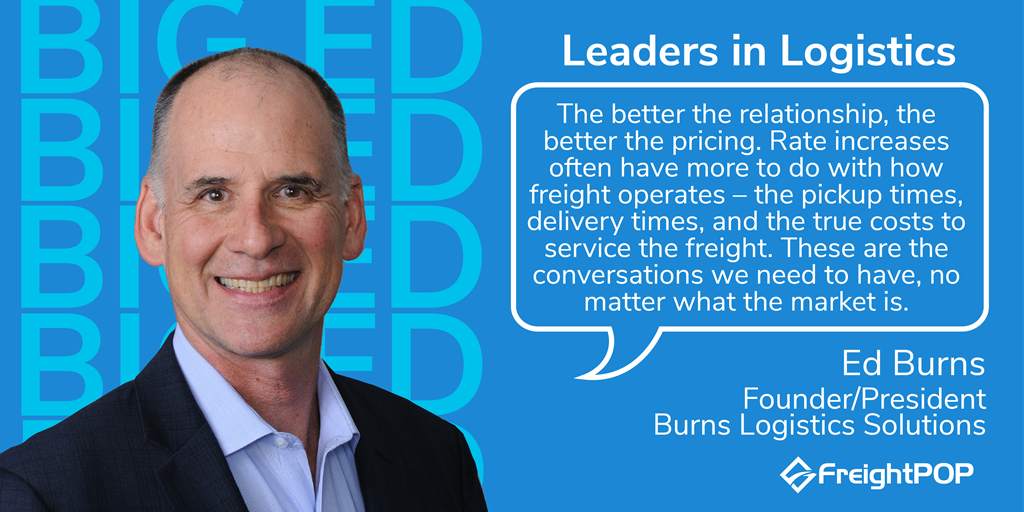The Advantages Of Digitizing Freight Data And How To Use It
Learn from a freight auditing expert the common pitfalls and opportunities of auditing, how carriers take advantage of shippers, and the benefits of...
4 min read
FreightPOP : Jul 12, 2021

LEADERS IN LOGISTICS: Tony Young, a senior ERP consultant from Ultra Consultants shares his insight on digitizing logistics, where many shippers stumble, and how to prioritize your digital transformation.
NOTE: To be featured in our ongoing Leaders in Logistics feature, reach out to our team!
Today we welcome Ultra Consultants' Senior Consultant Tony Young. Tony has a wide-ranging background in supply chain management and consultation. He worked 20 years for Motorola during their dominance in cell phone technology in manufacturing and supply chain management, where he led their worldwide distribution and infrastructure operations. Tony also served as Sears' National Parts Supply Chain Director, overseeing five major distribution centers and also worked in supply chain risk management at Ernst & Young.
At Ultra, Tony's focus is assessing customer supply chains and operations. He helps customers define goals and determine and negotiate for the best technology to reach those goals.
Tony: Ultra Consultants has been on the front lines of ERP consulting for 27 years. Our mission is to deliver value and profitability improvements to all manufacturing & distribution companies through process excellence, technology enablement, and advisory services.
Tony: Business transformation is the ultimate goal – but many organizations lack the processes or the methodology to achieve this goal.
Acquiring a solid understanding of a client’s goals and objectives is essential to helping them determine what processes are going to move the needle. We start with analyzing a customer's current state, reviewing the maturity of all processes, creating a vision of the future state, and identifying strategies to achieve their goals.
Tony: It can be very important depending on the products and location of your customers. TMS can help you select the right carrier, the lowest rates, and the best shipping routes. It can also enable you to optimize loads.
Shipping software also lets you manage carriers in terms of contracts (terms and conditions) and allows you to stay on top of carrier activity to ensure they fulfill contractual obligations.
Shipping software achieves all this by automating a lot of freight functionality. This brings us to integration. A big part of digitizing your logistics involves integration.
Your TMS solution should connect to your carriers so you can readily see their rates. And your TMS should integrate into your ERP system, with the entire set of activities around scheduling a shipment, scheduling a pickup, and carrier selection pulled together—this eliminates a lot of paperwork and manual labor.
Tony: Before using integrated shipping software, you would have to call up carriers or visit individual carrier websites to inquire about routes and obtain rates and TOCs, which is a very manual, inefficient shipping process. This way does not provide visibility across your business.
Without integrated shipping software, it is difficult, if not impossible, to know where your shipments are, establish if something has gone wrong, and troubleshoot issues or proactively communicate issues to customers.
Tony: One of the first things they get is freight visibility. Now, they can see where their freight is, and know when inbound shipments of critical parts, for example, are going to arrive, which allows you to schedule or adjust production accordingly.
And of course, another immediate benefit is that you will have a cost reduction in labor as many of the activities surrounding shipment scheduling, managing freight, and managing carriers will be automated.
Tony: There are a couple of things. Many people don't really fully understand the benefits. One of the situations we run into, particularly with smaller firms who have been relatively successful for a long time, is that they don't know what they don't know.
Some don't fully understand the benefits that can be driven by implementing a TMS solution or think it's too complicated. Some have been maintaining certain carrier relationships for ages that they are afraid to lose. What they are missing is the lost opportunity of NOT considering other carriers. There may be potential savings out there, or carriers who can ship your freight faster, quicker, or better. However, if you don't look, you won't know.
Tony: Shipping, for the most part, is not a core activity for a lot of businesses. For many, it is simply a cost of doing business, which means it may not get the attention it deserves. Shipper’s risk leaving money on the table because they fail to evaluate shipping spend, or don’t understand the benefits of improving their shipping processes.
It is important for procurement, in particular, to understand the details when provided with a quote where the cost of freight is built into the cost of a part. When you don't consider freight costs vs. actual part costs, you lack the information required to determine what comprises your total landed cost. You may find that you can get a lower total cost from a competitor, if you purchase their part, and negotiate your own freight.
The ability to know exactly what you're paying on freight is a big deal. You need to have your suppliers provide you with separate numbers— cost of the product, independent of shipping. Without both numbers, you are not in a position to negotiate on either.
Tony: You need to start by identifying the problem you are trying to solve. You want to make sure you're buying software to solve your problem and are not spending money on things that are not important for your business. You don't digitize just to digitize. Software companies will sell you the moon—you need to stick to solving your problem.
So, identify your goals and then define your scope. "You can't boil the ocean," as they say. Many software implementations fail because companies try to go in and fix everything all at once, which can be too much change while you are running your business. Limit your scope to what will be impactful in solving your problem and reaching your goals.
Lastly, prepare for the significant change management your teams are going to experience. People's jobs are going to change. Things that you currently measure today are going to change. You need to be open and upfront about what you are doing and why you are doing it before you even start thinking about software options. Give people time to prepare (and support) for the coming changes.
![]()
Want more tips on how to take your digital transformation to the next level? Use our free ebook bundle Integrations & Digitizing Logistics! There are many moving parts to your supply chain. Access industry tips on integrating and creating better supply chains to manage and scale your freight!

Learn from a freight auditing expert the common pitfalls and opportunities of auditing, how carriers take advantage of shippers, and the benefits of...

Seasoned industry leader FreightOptics CEO Brad McBride talks about the trends he sees in carrier bidding processes and what holds companies back...

LEADERS IN LOGISTICS: Burns Logistics Founder shares insight on freight sales, why building long-term relationships is critical, and how shippers and...